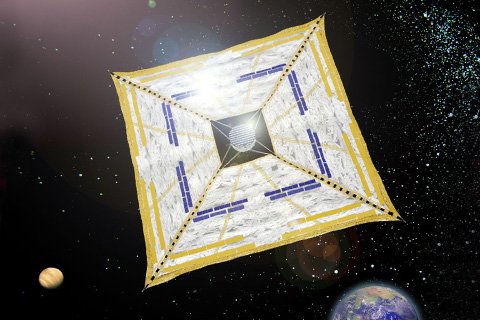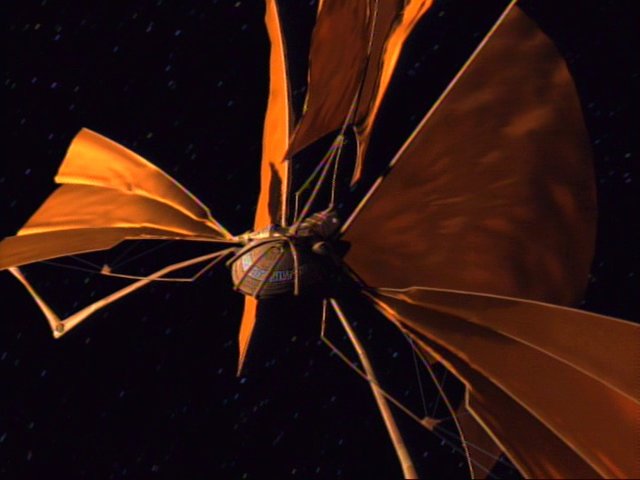Future of Interstellar Travel; A Look on Solar Wind Crafts
Sailing by the Solar Winds
I have always been fascinated by science, and space science is no exception. Recently I read an article about the IKAROS solar sail project, which did just that. I write this article with details on the subject of Solar Sail probes from various sources I came across during my reading on the subject. Enjoy!
Everyone that's seen Star Trek - Deep Space 9 remembers the journey that Cap. Benjamin Cisco and his son take in a replicated spacecraft that sails on the solar winds.
The story was that the Bajoran people colonized space by the means primitive vessels using no engines, but instead ships with big solar sails, just like a ship on the ocean using the wind.
More than Fiction
You can be sure that if someone writes about something, another one will soon start to backtrack the idea and make it a reality. Some scientists take these ideas and build truth from them, and this is precisely what they do with the idea of sailing by the solar winds in space.
But how practical is this, can you propel anything and how fast does it go?
According to a concept mission by NASA in 1999, a spacecraft with a sail of 400 meters in width, could travel 2 billion km per year. By this speed, it means that it would pass Neptune in just one year, while it would fly by Mars in only 30 days, which is at 75 million km from Earth.
Lets take a look at where we are today.
IKAORS - A Hybrid Engine "Proof of Concept" Probe (2010)

The Japanese probe, IKAROS, launched in 2010. During an interplanetary launch to Venus, they made a proof of concept demonstration, making fiction into science.
The sail on the IKAROS probe was a "hybrid" as the sail contained a thin film that converted the solar rays into energy for the ion propulsion while also using the sail for forwarding momentum.
IKAROS deployment in space
The following is a CG animated video of how the solar sails are deployed in space during the IKAROS mission
LightSail 1 (2015)

On-board cameras of LightSail 1
On May 31st, 2015, the The Planetary Society launched their first mission test with LightSail 1. The mission was near to fail as both communication and sail deployment stopped working, a failure in batteries was thought to be the cause. However, after several days of touch and go, LightSail 1 finally regained contact, and the sail was deployed on June 7th. On the right we have an image taken from the craft in orbit around the earth as the 32 square meter sail is unfolding. The mission was declared a success.
The craft re-entered the earth shortly after, on June 14th, but proved the concept and paved the road for the future craft of LightSail 2, which was first scheduled to be launched in April of 2016.
LightSail 2 (2018)
The second craft, LightSail 2, is currently scheduled to be launched no earlier than 30th of April, 2018, with the help of SpaceX and their Falcon Heavy rocket. As LightSail B has been put on the manifest of the second or third launch of the Falcon Heavy, we are still waiting for the first start of their rocket so far.
Due to an accident in 2016, involving a SpaceX Falcon Heavy, all launches have been moved to another pad at the Kennedy Space Center resulting in delays in launches. (Source)
This mission will look for making deployment of the sail better by controlling the orientation of the sail relative to the Sun.
The LightSail B probe is relatively small before it is deployed, only 10 cm by 30 cm, and below is a demonstration on how the LightSail B probe is deployed.
Near-Earth Asteroid Scout (2019)

Concept Imagery of NEA Scout Probing an object
Based on the CubeSat project, started by Surrey Space Centre in England, in 2010, NASA has planned missions to use solar sails in probing missions of near-earth asteroids, typically in the range of 1-100 meters in diameter. These probes will investigate NEA objects to close the gap in our understanding of these objects.
The first launch is scheduled to be in 2019, and the most likely target is the 1991 VG asteroid but may change before the start.
Problems and the Future Ahead
The problem with solar sail vehicles is that the wind of the sun doesn't extend indefinitely. At some point, the winds just aren't enough to propel them. One private effort, Breakthrough Starshot, hopes to solve this with the use of powerful lasers which could move a craft to a tenth of the speed of the light, or even faster. These speeds would make a ship able to make a mission to our nearest star system, Alpha Centauri, within one generation.
The distance to Alpha Centaur is a staggering 40 208 billion km (remember the distance a solar craft could make in a year from the beginning of this post? No... 2 billion per year).
Another solution is to make long distance travels could be to convert the rays of the sun into electrical power, much as we do already, but much more efficient that it could power a fuel system that turns gas into plumes of plasma.
In whatever way the future of space travel takes us, it will be much exciting time to live for sure!
Sources: Scientific American, Jaxa, Planetary
Interested in the Galaxy? Join Gridcoin!

If you are interested in the galaxy, you should take a look at BOINC, a distributed project platform. Gridcoin rewards work done on the BOINC platform, independent of the projects, and is open for anyone to receive some credits for their scientific work in various fields.
Here are a few of the more Space related projects that can receive rewards in Gridcoin (as of today):
- Cosmology@Home; Runs models to find the best way to describe our universe
- Milkyway@home; Building the Milkyway in an as accurate as possible 3D model
- Universe@Home; Aims to create a database to simulate the universe, from black holes to the earliest stars.
Join Gridcoin Today

Vote for me as Witness

Do You enjoy what I contribute to the community, consider voting for my Witnesses or as a Steemit Proxy Voter.
By voting for me as a witness, you will support an active witness on Steem and BitShares. I believe a witness should keep up-to-date on current happenings and be a conduit between the many users and the system.
Read my Witness Posts: BitShares, Steemit
Support my Projects: Project Minnow Witness, Gridcoinstats.eu, Crypto.fans
Steemit: sc-steemit
BitShares: sc-ol

I do like the concept of solar sails, but the studies in warp drive technologies has my attention :) great article.
Hehe, absolutely! 😅
Thank you!
Thnx @sc-steemit for putting this info all together.
Hi @sc-steemit, again a nice article to get the old gray cells working again :) Iam missing the EM Drive, or has this now been ruled out ? Last thing i heard was that NASA published an article that somehow should prove that in theory this could work ..
Thanks alot !
Kind regards
Jan
Thanks, always a pleasure writing about interesting topics since i learn alot myself in the process.
As this post was more about solar sailing, I haven't heard of the EM Drive project by NASA before. From what I can tell it seems that it's not a probable system. Cool idea, but nothing feasible proved around it yet. NASA seems to deny it's usefulness as well.